There are three units in the higher physics course.
Download your own copy of the Higher Physics Relationship Sheet (pdf)
If you are using past papers to prepare for an assessment, the Revised Higher papers are a good match for CfE Higher. There is also significant overlap between CfE Higher and Traditional Higher; some of the content was moved to National 5 (e.g. vectors, gas laws) but other topics were removed completely, so you should expect questions in Traditional Higher past papers that you won’t be able to answer.
This table contains links to SQA past papers for the Higher Physics exam. These papers and solutions are reproduced to support SQA qualifications on a non-commercial basis according to SQA conditions of use.
Unit 1 – Our Dynamic Universe
equations of motion
The equations of motion can be obtained by analysing a velocity-time graph.
I have some handwritten examples of how to apply the equations of motion to different scenarios. They are available as pdf files by clicking on the links below. There is a commentary in red pen alongside the solution as it progresses.
moving up & down in one problem
projectiles
Thanks to Valdo at Yoker Uni in Glasgow for this video on projectile motion.
projectile off a cliff (similar to equation of motion examples above)
example of projectile motion – shoot the monkey (video)
projectile motion (video)
Here is a worked example of a projectile problem.
answer to Higher HW Q5 02-09-09 from mr mackenzie on Vimeo.
forces
Newton’s 2nd Law
Here are two worked examples of tension that can be solved using Newton’s 2nd law (F=ma).
HW question 4 from mr mackenzie on Vimeo.
Higher HW Q5 from mr mackenzie on Vimeo.
When a force acts at an angle, resolve the force into its x and y components, as shown in this video.
HW Q1 from mr mackenzie on Vimeo.
In a lift, you might notice that your apparent weight increases or decreases as the lift accelerates
Read my blog post on Newton III in action (equal and opposite forces)
momentum & impulse
simulation of collisions on an airtrack – set mass/velocity and predict what happens after the collision
explosion simulator – predict motion of the person and the cart after the jump
Of course, Valdo has a lesson on momentum in his own style
Elastic and Inelastic collision simulator
Valdo also has a video about impulse.
special relativity
Before we look at Special Relativity, here is a video about the speed of light
This video follows Einstein’s thought process as he worked through his special theory of relativity.
time dilation
A Tale of Two Twins from Oliver Luo on Vimeo.
another take on special relativity and the twins paradox
…and the Glesga Physics version
length contraction
This video has helpful examples to explain length contraction. Sometimes it’s easier to imagine we’re a stationary observer watching a fast moving object go whizzing past. For other situations, it’s better to put yourself into the same frame of reference as the moving object, so that everything else appears to be moving quickly, while you sit still. The muon example in this video shows how this alternative perspective works to our advantage in Special Relativity.
Another way to think about this alternative perspective is that it’s hard to measure distances when you yourself are moving really quickly. Think about it, you’d get tangled up in the measuring tape like an Andrex puppy.

image: trotonline.co.uk
It would be far easier to imagine you’re the one sitting still and all the objects are moving relative to your position. That keeps everything nice and tidy – including your measuring tape. Got to love Einstein’s postulates of special relativity.

image: mirror.co.uk
This short video from Minute Physics explains why so many of the muons created in our upper atmosphere are detected at sea level.
the expanding universe
Stars – colour, temperature & the Hertzsprung-Russell diagram
As the temperature of a star increases, the emitted light will appear to move from the red end of the spectrum, through to orange, yellow, white and even blue. The most intense (peak) wavelength emitted by a star shortens as the temperature increases. This relationship is called Wien’s Displacement Law. Additional explanations and activities are available here and here.
redshift
more redshift
and Yoker Uni’s video about Doppler and stuff
While redshift can be used to tell us about the recession velocity of (non relativistic) galaxies, we also need to find a way to measure the distance to these galaxies. Astronomers have two main methods to measure these distances; parallax (more parallax here) and cepheid variable stars – there’s a Khan Academy video on cepheid variable stars.
Hubble
Edwin Hubble had access to the Hooker telescope on Mount Wilson outside Los Angeles. This was the largest telescope in the world at that time. His first breakthrough was the discovery of a cepheid variable star in the Andromeda nebula. This enabled him to calculate the distance to Andromeda and he quickly realised this was not a nebula but a galaxy outside the Milky Way.
This video follows his work.
Hubble – nebulae or galaxies? from mr mackenzie on Vimeo.
Hubble then turned his attention to other galaxies, looking for cepheid variable stars that would allow him to determine their distances from the Milky Way. He used redshift to calculate their recession velocity and plotted a graph against distance.
He found that the recession velocity v was directly proportional to distance d. We can express this relationship as
where is the Hubble constant. Astronomers agree that the current value of the constant is
.
Since this is a SQA course, we need to convert into SI units – giving
In this video, Professor Jim Al-Khalili looks at Hubble’s work on the expanding universe.
Hubble’s discovery of the expanding universe from mr mackenzie on Vimeo.
Although he was American, Edwin Hubble transformed himself into a tea drinking, pipe smoking, tweed wearing Englishman during his time as a Rhodes Scholar at Oxford. He probably wouldn’t approve of this video.
Of course, if the Universe is expanding, it means that we can imagine the Universe originated at a point in space and expanded out to its current size. This theory is called the Big Bang and is attributed to Georges Lemaître.
The expanding Universe is commonly modelled using a balloon. Is this a good model?
We need to be careful when we talk about the Big Bang. Astrophysicists talk about expansion of the Universe, not an explosion. The expansion can be mapped using redshift. This video gives a good description of expansion.
Have we found any evidence to support the Big Bang?
Hydrogen, helium and cosmic microwave background radiation from mr mackenzie on Vimeo.
Evidence:
1- cosmic microwave background radiation
The cosmic microwave background radiation (CMB) is radiation left over from the big bang. When the universe was very young, just as space became transparent to light, electromagnetic energy would have propagated through space at a much shorter wavelength. Nowadays, the temperature of space has fallen to approximately 2.7 K (that’s 2.7 K above absolute zero!) and, using Wien’s Displacement Law, we can confirm that the peak wavelength of the electromagnetic radiation is now so long that the background radiation lies in the microwave portion of the electromagnetic spectrum.
The CMB was first detected in 1964 by Richard Woodrow Wilson and Arno Allan Penzias, who worked at Bell Laboratories in the USA. They were building a radio wave detector when they found a source of noise that seemed to come from every direction. That the noise came from every direction ruled out a specific star or galaxy.
Wilson and Penzias shared the 1978 Nobel Prize for Physics for their discovery of the CMBR. In recent years, three different spacecraft have mapped the CMBR.
-
- COBE (1989-1993)
-
- WMAP (2001-2010)
- Planck (2009-2013)
Each mission has given a better map of the CMBR than its predecessor – see below.
2- the distribution of hydrogen and helium throughout the universe
Immediately after the Big Bang, the young universe was hot. Very hot. After 1 second, the universe had cooled enough for fundamental particles to come together and form protons and neutrons. During the next 3 minutes, the universe still really hot. Hot enough for the protons (hydrogen nuclei) to combine through nuclear fusion and form helium. Looking at the gas clouds around the universe, we find they are 75% hydrogen and 25% helium. It’s no coincidence that these two gases are in the same proportion wherever we look. The ratio of hydrogen:helium is the same because they were formed at the same time, during the first three minutes of the Big Bang.
For more information on the significant points in the evolution of the universe, click on the image below.
3- Olber’s Paradox
In solving Olber’s Paradox, we identify evidence that supports the Big Bang. This video considers Olbers’ Paradox. It’s 19 minutes long but the points are very well presented.
How will the universe end?
It’s complicated and cosmologists are not certain. One of the issues is only being able to see about 4% of the mass in the universe – the stars, planets, gas and dust. About 25% of the mass of the universe is Dark Matter. It’s “dark” because it doesn’t emit light that enables us to see it. Vera Rubin and Fritz Zwicky were the two astronomers who produced observations that led to the dark matter theory.
Vera Rubin measured star velocities in the Andromeda galaxy and plotted these against the star’s distance from the centre of the galaxy. Knowledge of rotational speeds within our Solar System would predict a graph similar to curve A. What she obtained was a relatively flat graph (B).
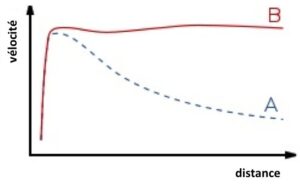 image from Quantum Diaries
image from Quantum Diaries
The rotational speed of the stars in curve B are far too fast for the Andromeda galaxy to stay together. The only explanation for the galaxy staying together was the presence of an awful lot of additional mass that couldn’t be detected. This new mass was named dark matter.
Rubin talks about her discovery in this video.
Vera Ruben dark matter dark energy from mr mackenzie on Vimeo.
Zwicky had been looking at clusters of galaxies, rather than individual stars within galaxies. He found something similar; the galaxies were swirling round at too great a speed and should fly apart. There had to be an awful lot of invisible mass in that part of space to produce a gravitational force strong enough to hold the cluster together.
Zwicky – dark matter from mr mackenzie on Vimeo.
There’s a further complication. The expansion of space appears to be caused by an unknown force called Dark Energy, that fights against the pull of gravity which should be reducing the rate of expansion.
dark energy – end of the universe from mr mackenzie on Vimeo.
Saul Perlmutter was awarded the Nobel Prize for Physics in 2011 for his work on Dark Energy. This video explains where we are in our understanding of where the universe will end up. It contains some similar footage from the end of the Vera Rubin video, so any déjà vu is real.
Saul Perlmutter dark energy from mr mackenzie on Vimeo.
Unit 2 – Particles & Waves
Now we’re moving from big things like stars, galaxies and the Universe itself, to particles so small we need groups of them just to make a single atom. What’s the connection?
Why do we study particles? from mr mackenzie on Vimeo.
The Standard Model
An elementary (or fundamental) particle is a particle that is not built from other, smaller particles. Until the start of the 20th century, scientists had believed that atoms were elementary particles. However, the discovery of the electron (J.J. Thompson), proton (Rutherford), and neutron (Chadwick), together with Rutherford’s evidence for a heavy, positively charged nucleus at the centre of the atom suggested the atom was not an elementary particle after all.
Brian Cox explains in this video clip…
To go further, we have to introduce some particle physics vocabulary.
These new elementary particles are part of our Standard Model of how the building blocks of the universe interact with one another. The particles that form “matter” are called fermions, after Enrico Fermi (Fermi has an incredibly long list of things named after him). The fermions are divided into two groups; quarks and leptons, as shown in the diagram below.
The Standard Model of Particle Physics. image: The University of Tokyo
Quarks
Quarks were predicted independently by theoretical physicists Murray Gell-Mann and George Zweig. The Nobel Prize in Physics was awarded to Gell-Mann in 1969 (interview here).
Quarks are held together in groups of two or three by the strong nuclear force, which acts via the exchange of gluons. Particles made from quarks are called hadrons. The subatomic particles we call protons and neutrons are actually made from quarks, so protons and neutrons are examples of hadrons. Protons are smashed together at CERN in a particle accelerator called the Large Hadron Collider.
What is the LHC? from mr mackenzie on Vimeo.
Quarks make up many different particles, so the hadrons are classified in two groups; those made from two quarks are called mesons, while particles made up from three quarks are called baryons.
- protons are made from two up quarks + one down quark
- neutrons contain two down quarks + one up quark
so protons and neutrons are baryons.
You may recall from Our Dynamic Universe that baryonic matter (matter made from baryons) i.e. protons & neutrons, only accounts for about 4% of the mass in the Universe.
Mesons have short lifetimes, even the most stable mesons exist for less than a millisecond. Mesons are a bit complicated because they contain one of the six quarks from the Standard Model bound to an antiquark by the strong nuclear force. An antiquark is the antiparticle of one of the six quarks. Antiquarks are an example of antimatter.
Antimatter was proposed in 1928 by British physicist Paul Dirac, who won the Nobel Prize in 1933 for his work. If a particle combines with its antiparticle, the two particles annihilate to produce pure energy. Consequently, a meson can’t be formed by a quark bound to its own antiquark.
Scientists are trying to discover out why our Universe is overwhelmingly matter-based. At CERN, the LHCb experiment is looking at quarks produced during proton-proton collisions to find out what happened to all the antimatter produced during at big bang.
The physicists at Sixty Symbols have a slightly different take on quarks
Leptons
The 6 leptons exist individually, rather than joining together to form new particles. The electron (e), muon (μ), and tau (τ) have mass and a negative charge, while the electron neutrino (Ve), muon neutrino (Vμ), and tau neutrino (Vτ) have no charge. The weak nuclear force acts on all leptons and the three charged leptons are also acted upon by the electromagnetic force.
While we’ve met the electron several times, this is only the second time muons have been mentioned. In Our Dynamic Universe, we learned how the presence of muons at ground level is explained by the special theory of relativity. The muon was discovered in 1936 by American Physicist Carl Anderson. 1936 was a great year for Anderson, it’s also the year he won the Nobel Prize in Physics for his discovery of the positron, the antiparticle of the electron. Just 4 years after Dirac’s prediction, Anderson discovered the trail of a “positively charged electron” in 1932 and proved the existence of antimatter.
It was thought neutrinos are massless in the Standard Model. However, the Nobel prize in Physics 2015 was awarded to both Takaaki Kajita and Arthur B. McDonald for their experimental discovery of neutrino oscillations, which demonstrates that neutrinos must have mass. It is incredibly difficult to detect neutrinos because these particles rarely interact with anything. Since neutrinos have a mass, albeit a very small mass, they may be the source of dark matter – the “missing” mass of the universe.
electric fields
An electric field can be used to accelerate charged particles. Conservation of energy tells us that the work done by the field is equal to the change in the particle’s kinetic energy. The speed of the particle can be determined if its charge and the accelerating voltage are known. These notes show how to perform the calculation.
These short video clips show how to draw electric field lines for point charges and parallel plates, with example calculations for the work done by electric fields and the final speed of charged particles in electric fields.
Q1(a) Electric fields lines around point charges from mr mackenzie on Vimeo.
Q1b – Electric field between parallel plates from mr mackenzie on Vimeo.
Q2 – Work done in moving a charged particle through a potential difference from mr mackenzie on Vimeo.
Q3 – Calculating the speed of a charged particle in an electric field from mr mackenzie on Vimeo.
magnetic fields
These Bitesize pages will help if you need to recap on the basics of magnets. A magnetic field is produced whenever current flows through a wire. The magnetic field is represented by a series of concentric circles around the wire, as shown below.
Magnetic field lines around a current carrying wire. image: physick wiki
The direction of the arrows on these magnetic field lines is found using a left hand rule:
Point your thumb in the direction of electron flow, then wrap your fingers around the wire. The direction in which your fingers curl is the same as the arrow direction.
A charged particle will experience a force as it moves through a magnetic field – apart from the special case where the particle enters parallel to the magnetic field lines. There are different ways to determine the direction of the force acting on the charged particle. The following method works for negatively charged particles.
Hold out your right hand and make a fist like Batman.…BIF!
Batman making a fist with his right hand. image: infinitehollywood.com
Still thinking about BIF…
- Straighten your thumb (B), first finger (I), and middle finger (F) so they are at 90 degrees to one another, like the x,y,z axes on a graph.
- Align your thumb so it points in the same direction as the arrows† on the magnetic field lines (B).
- Rotate your right hand until the first finger direction matches the path of the negative particle (I).
- Your middle finger will reveal the direction in which magnetic force (F) acts on the negative particle.
† if no field lines are shown, position your thumb so it points from N to S in the magnetic field
If you’ve done everything correctly, the fingers of your right hand will look like this.
Right hand rule for negatively charged particles in a magnetic field.
If you are working with positive particles, there are two options:
- use your left hand instead of the right, keeping the same BIF order for the fingers OR
- use the right hand rule described above but reverse the direction of the force at the end.
Try both methods and decide which is best for you. If you opt to use different hands, make sure you know which hand to use for each type of charge.
Why do we use B as the symbol for magnetic fields? I have no idea, but there are some suggestions here.
Photoelectric effect
Here are two animations about the photoelectric effect.
In animation#1, the effect of frequency can be investigated. Find out which of the light sources shown produces the photoelectric effect. You should find that the effect only occurs when the high frequency light is used.
In animation#2, you can investigate how irradiance affects the photoelectric effect by changing the position of the uv lamp. Remember that irradiance is the power per unit area.
To explain the photoelectric effect, we have to think of the light behaving as particles rather than waves. We call these particles of light photons. Click here to see a short animation of photons freeing electrons from a surface.
Here is a video showing the photoelectric effect on an electroscope.
There is another animation that lets you change photon energy and irradiance here. I’ve uploaded some revision notes with questions.
Interference
Here is a simulation of interference between sound waves. Click on the picture to take you to the site and choose the Two Source Interference option at the top of the screen. Move the man’s head very slowly and listen for changes in the volume (remember to switch the audio on!)
You can also investigate the effects of amplitude, wavelength, bright fringe spacing and slit-to-screen distance on interference patterns obtained using sound, water or light waves in this second simulation. Click on the image to go to the site.
Gratings
Diffraction is a test for wave behaviour. When a ray of light passes through a grating, the rays travelling through each line of the grating are diffracted. These diffracted rays interfere and a series of bright fringes are observed. Constructive interference is occurring at each location where a fringe (or spot) is observed. The energy of the incident beam of light is shared out amongst the fringes. Find out about gratings here. 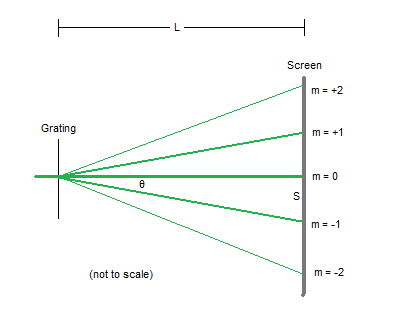
image: laserpointerforums.com
We can measure the relative positions of the fringes in a diffraction pattern to determine the wavelength of the light used. The diffraction grating equation is
where
- m is the diffracted order – some older resources may use n instead of m
- λ is the wavelength
- d is the line spacing.
Here are some notes with problems on diffraction gratings. Working through these will give you a good grounding in the interference and diffraction topic.
Polychromatic light
Light containing more than one wavelength is called polychromatic light. White light is an example of polychromatic light as it contains all the colours in the visible spectrum. We can split polychromatic light into its constituent colours using a prism. Notice how red light is refracted least when a prism is used.

We could also use a grating to split the polychromatic light into the individual colours it contains, such as the white light from this candle.

Each wavelength emitted by the polychromatic light source undergoes constructive interference at a slightly different angle. The result is a sequence of blurry spectra, rather than the clear spots we obtained from a monochromatic light source. The diagram below might help you to understand how these images are formed.
Notice that there are several differences between the prism and the grating;
- the prism produces only one spectrum but the grating gives many spectra;
- the zero order light (centre candle image) from the grating is not split up – it is the same as the original incident light;
- the long wavelengths (such as red light) that are refracted (bent) least by the prism are diffracted (bent) the most by the grating;
- the grating spectra either side of the centre (zero order) are mirror images – long wavelengths (e.g. red) are always diffracted to the outer side of the spectrum.
Refraction
You were introduced to refraction during the National 5 course. At Higher level, we are interested in the relationship between the angles of incidence (θi) and refraction (θr).
Snell’s law tells us that
Usually material 1 is air, and so . This simplifies Snell’s law to
where n is the absolute refractive index of material 2. The refractive index is equal to the ratio of the ray’s speed v in materials 1 & 2 and also equal to the ratio of the wave’s wavelength λ in materials 1 & 2, so we can show that
Read more about Snell’s law here.
total internal reflection
Here are some applications of total internal reflection here. You can test your knowledge of refraction with this interactive simulation.
I have attached a pdf with some notes and questions on refraction, total internal reflection and critical angle.
line spectra
Nice video explaining the origin of emission and absorption spectra.
lasers
The first laser was demonstrated in 1960 by Theodore Maiman and his research group at Hughes Aircraft Corporation in California. Here is a good background article on the first laser, its inventor and the role that Einstein played in developing the theory of stimulated emission.
The principle of laser operation is outlined in this description of Maiman’s laser, which used a rod of polished ruby inside a spiral flashtube.
My favourite James Bond film, Goldfinger, has a scene where Sean Connery (the best 007 imho) is strapped to a table under a huge red laser. It should have been a saw but the invention of the laser, just 4 years earlier, was a gift for the writers. This scene helped the film win the best effects Oscar in 1965 and, more importantly, gave us the ultimate Bond quote:
Bond: Do you expect me to talk?
Goldfinger: No, Mr. Bond, I expect you to die.
Everyone should watch the laser scene.
Bonus points if you can identify the bad physics in that clip…
You can try running a laser for yourself. Click on the picture below to load a simulator. You’ll need Java on your computer to run the simulation.
Try changing lamp (pump) irradiance and mirror reflectivity on the single atom version before moving on to the multiple atom tab.
Here are some pdf notes on lasers.
Unit 3 – Electricity
Here are Mr Noble’s notes on the Electricity unit.
internal resistance
BBC Bitesize page about EMF and internal resistance – good explanation.
Have you seen Valdo’s internal resistance video?
TPD, EMF and internal resistance (pdf)
You can practise calculating the internal resistance and emf of a cell using this blog post.
I have written a blog post about Wheatstone Bridges
Capacitors
This short video is an introduction to capacitors and how they work.
MAKE presents: The Capacitor from Make: on Vimeo.
This article describes the different types of capacitors available and looks at their application in smoothing a dc voltage obtained by rectifying an ac voltage.
These 2 videos are included with some others in a blog post I wrote about capacitors.
Valdo from Yoker Uni has put a capacitor video on youtube.

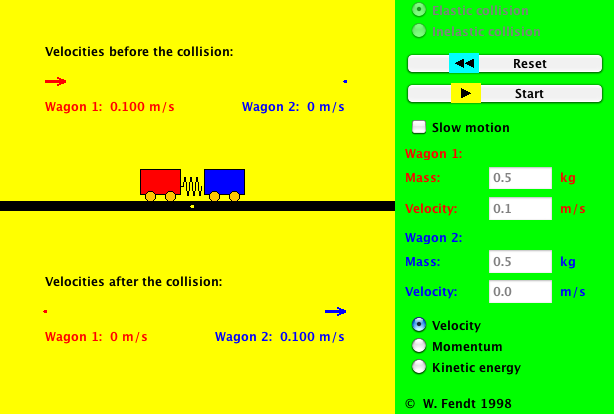
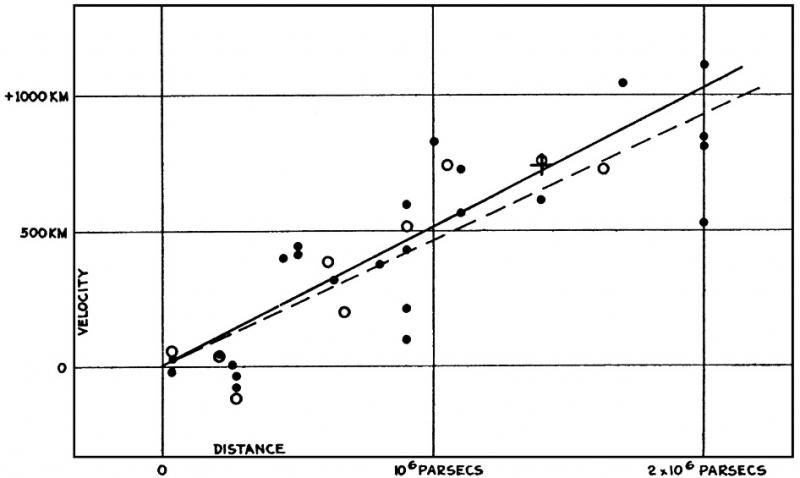
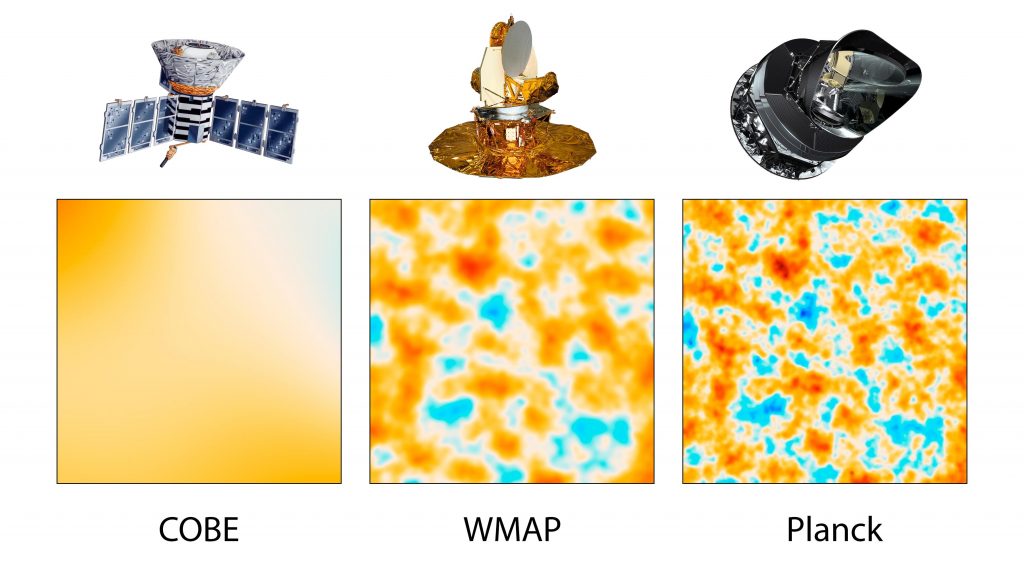
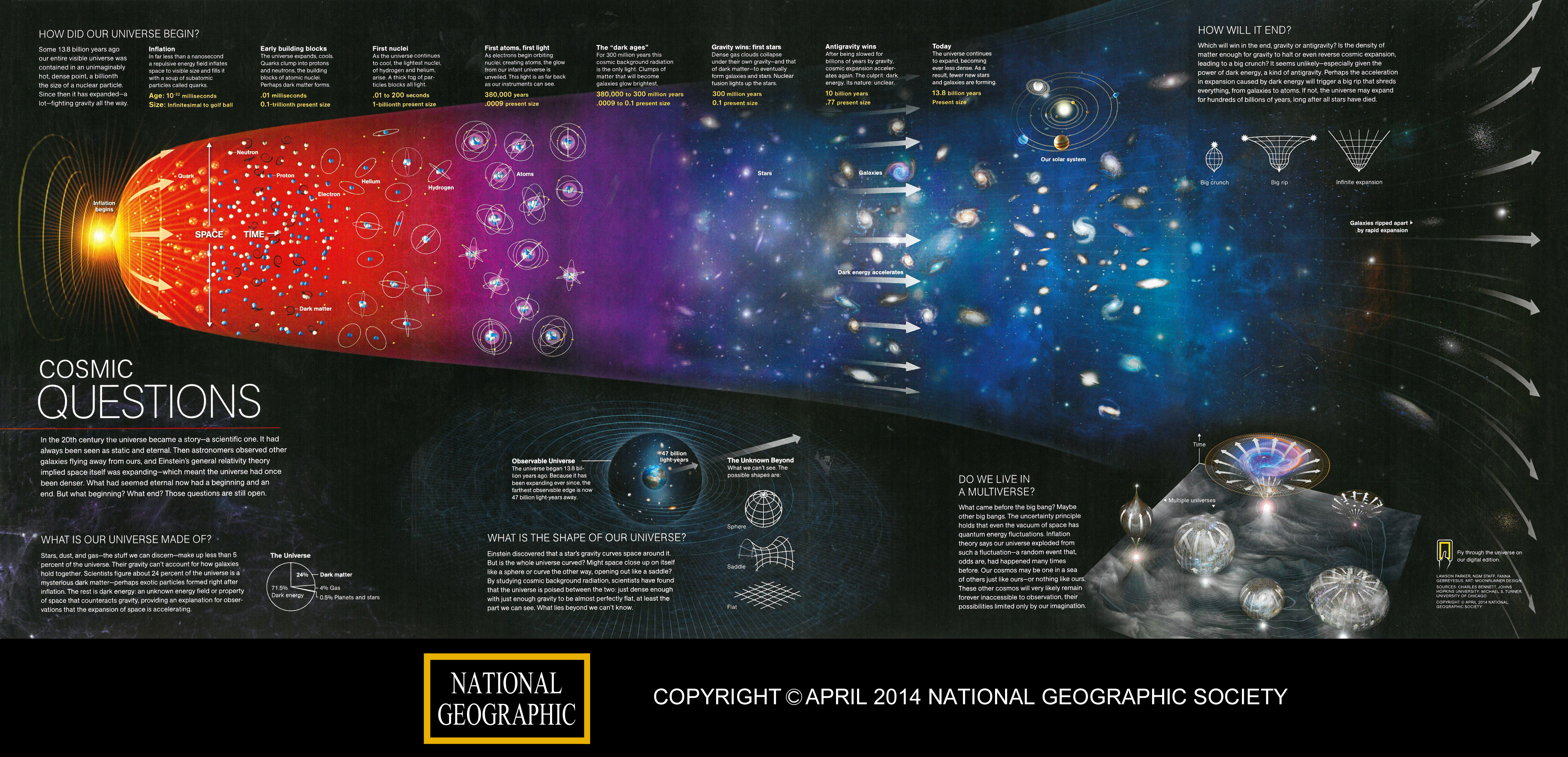
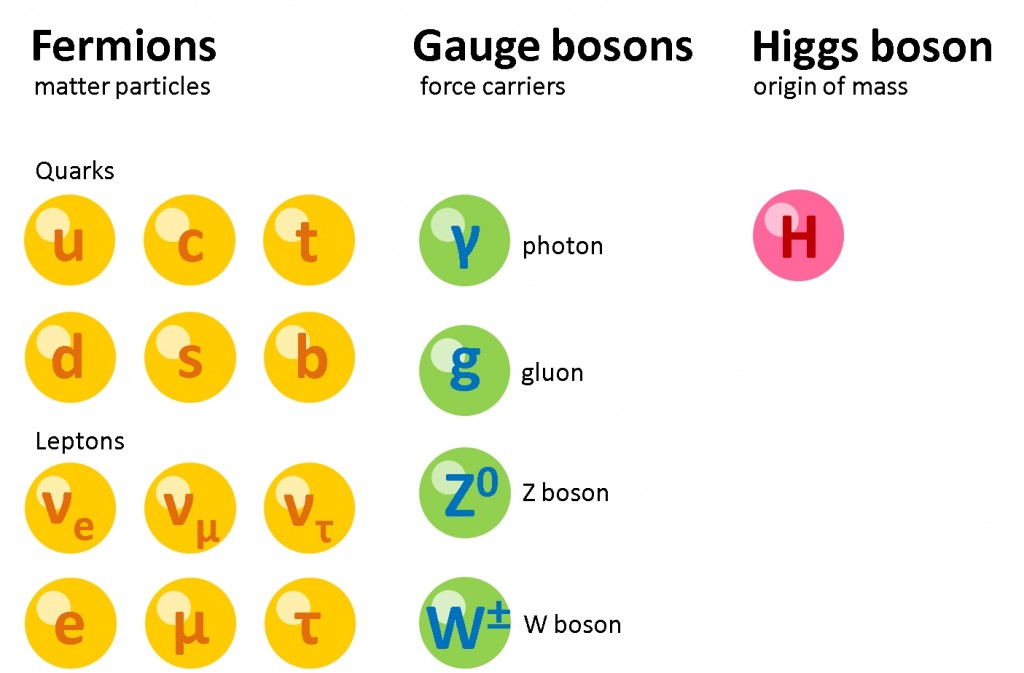


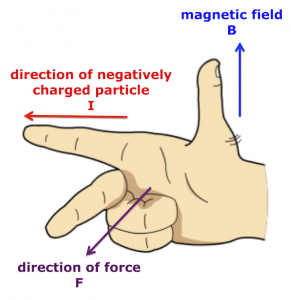
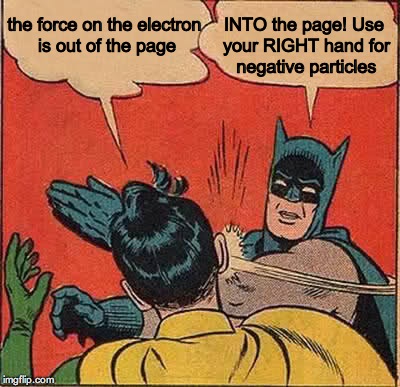
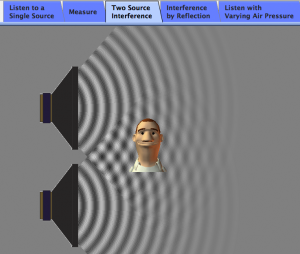
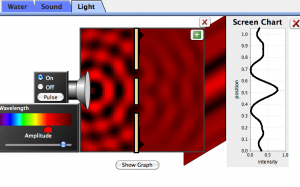
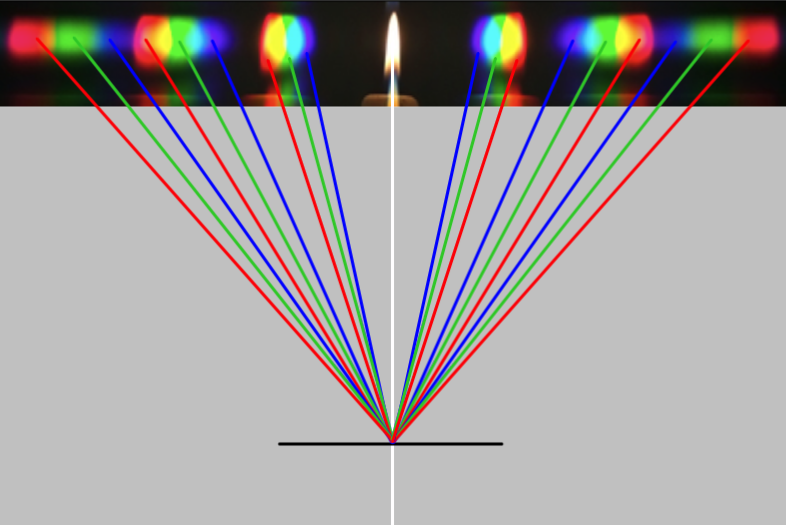
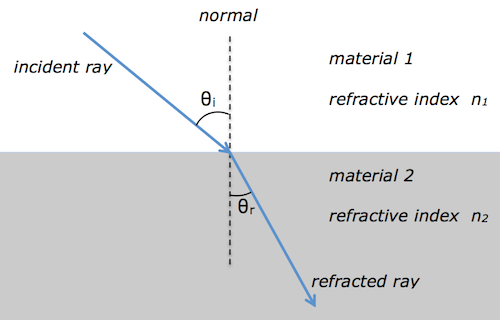
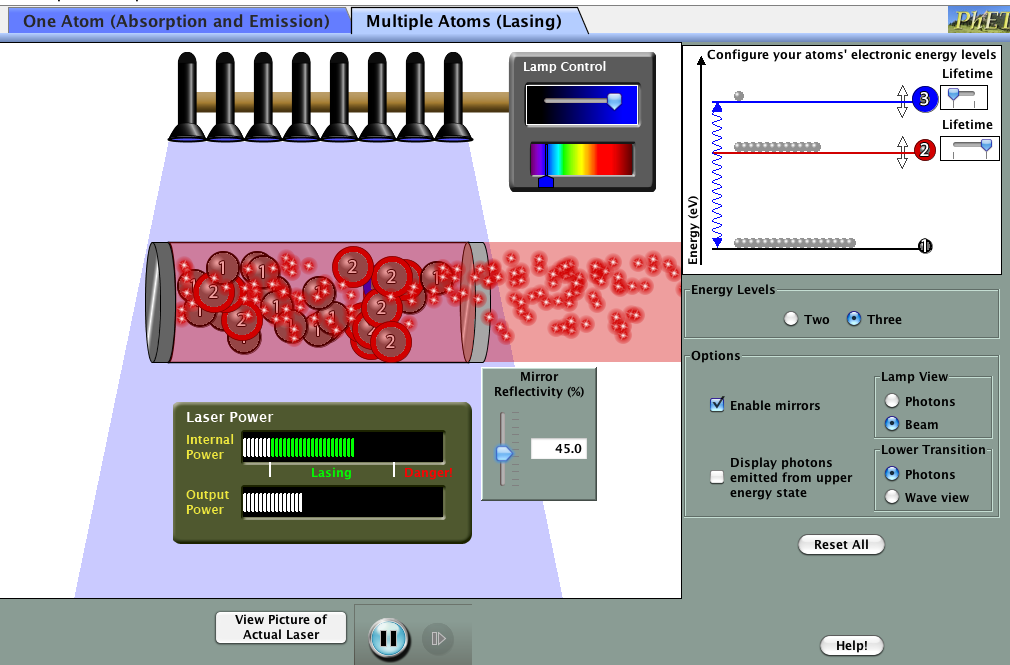
“no comments yet – be the first?”
I thought I’d be the first.
Nice site 🙂
Thanks for putting everything we need online!
yeah wat tht guy said ^66666
I don’t understand the equations of motion. I keep geting confused with how you apply them to questions. Could you maybe put up a few questions up on it and the answers with one example to start me off? Thank you.
Which type of examples would you like?
I could write some out by hand and scan them in (quickest way to get something online) or I can make video clips (takes longer).
Would scanned handwritten ones with notes in margin be enough to get you started?
I agree with what Stephanie C said, and yes scanned handwritten ones would be great.
Thank you so much
OK, some scanned handwritten examples are now in the links above. Also available in iTunes.
Hi
I am doing Higher Physics this year and am actually do ok at it. I get a tutor once a week but I thought I’d just drop a wee thank you to say that this site has helped a massive amount and I am on course for an A so thank you for putting so much effort into it. At my school this would be unheard of. Thanks.
hi, i find that your higher notes very useful but i have noticed that the 3.3 Optoelectronics & Semiconductors pdf file is missing all the notes on semiconductors and i was wondering if there is a problem with the document or if you have missed them out
thanks
Callum,
you’re right! I just checked and there is nothing on semiconductors. Those notes are not mine, I only link to them. I will add something later in the year though, so please check back.
Hi mrmackenzie.
just tried St. Kentigern’s Academy revision questions for unit 2 and i think some of the answers are wrong? Qu1, qu10 and 22b)
Thank you very much my Exams are coming up in May and your help with electronics is much appreciated. Might possibly get an “A” in th Int 2 exam.
Hi
I was wondering if you could help me with an explanation on photodiodes. In photovoltaic mode when an electron hole pair are created do the electrons move to the n – type or p – type? Also im struggling to understand how the voltage is created. Any help would be great.
Thanks
Cameron,
Valdo explains this in his video
Hey! I need to inform you that the only Physics Higher past paper available to me is the 1992 Paper II, the rest just lead me to a “can’t find this page”. Please get back to me if you know of anywhere else to get the older past papers.
Chaz
HI Chaz,
all of the links are working for me. I wonder if the wikispaces site where I uploaded them was down for a while?
Try clicking here to get all the past papers. Use the download link at the end of each section to get the papers you want.
Does it work that way?
Hey, The webtribe website seems to be down, so I am unable to get the answers to the old past papers. Is there any way you can put them on your blog?
thanks
The webtribe site is not my site. I don’t actually know who created it, although I am very grateful to whoever it is!
I downloaded a copy of the site to use in school when our internet access was restricted and have uploaded these files here.
I hope it works but no guarantees…
AMAZING SITE, ANY CHANCE OF A POWERPOINT SUMMARY OF UNIT 3?
OR AM I BEING DUMB AND MISSED IT?
MY PHYSICS EXAM IS TOMMORROW MORNING AND IVE GOT LIKE 4 HOURS TO REVISE THE WHOLE COURSE, I WISH I DIDNT LEAVE IT TO THE LAST MINUTE, NEVERMIND BOUT THAT POWERPOINT BTW, I PROBS WONT BE ABLE TO SEE IT B4 I SIT MY EXAM =
great website thanks for making all these materials available. downloaded the higher past papers dating back to 1992 off your website and was wondering if you could provide the answers for the papers as well. I apologise if these are available but I just couldn’t see them.
Thanks in advance.
You should be able to get them here.
Im sitting my Higher Physics exam at the end of this school year and I love this website, but in addition, are there any textbooks you would recommend that I could buy, to give me good and detailed summary notes with examples etc to help me revise?
I already have “Leckie & Leckie – Higher Physics Success Guide” but I find it only skims over the work.
Many Thanks
Try these questions (pdf) if you want some practise. There are answers at the back.
Additional stuff can be found on the Fife Science pages.
The best book, in my opinion, is Higher Still Physics By Geoff Cackett,Jim Lowrie. It is out of print but shows up fairly frequently on ebay. The Bright Red revision book is good (diagrams are excellent) but, like the Lockie & Lockie book you mentioned, it skims across the course. There is another book called New Higher Physics, with a picture of the sun on the front but I don’t like that book as much as the one I mentioned above.
Heyy
I can’t seem to get any of the past papers, maybe the links are broken the only one I seem to be able to view is 2004 paper 1,
Would love to be able to view the others as i’ve almost completed all the ones in my past paper book
Thanks
Sorry
I ment *1994 paper 1
I just checked the links and the all of the papers open for me.
Try clicking on just one at a time. Some of the files are very large, especially those from before 2000, as they are scans of original paper copies. Allow them some time to download and you should get them ok.
Instead of waiting for your browser to download and display the question paper, you could right-click on the link and save the file to your computer and open it with a pdf reader instead.
I have a question about the first “Young’s Slits” video.
When it speaks of ‘second order minimum’ n=2 is used. I don’t understand why it is not n=1 because from the 0th order maximum to the 2nd order maximum, I think there are two minimums ie. 0.5 and 1.5 (which would be the second order minimum).
Can you please explain why to use n=2? 🙂
Good question!
The number we use for n comes from the path difference calculation. If there are 2 waves travelling different distances to reach a point, the extra distance travelled by one of the waves is called the path difference.
For constructive interference to occur, the path difference = n x wavelength (with n=0,1,2,3…)
and for destructive interference we need path difference = (n + 0.5) x wavelength (with n=0,1,2,3…)
If you think about moving from the 0 order maximum to the 1st order maximum, we will find a minimum in between them – just like you said. The path difference to the 0 order maximum is 0 (n=0) and path difference to the 1st order maximum is 1 x wavelength (n=1). For the minimum that we find between these 2 maxima, the path difference is 0.5 x wavelength.
From our destructive interference equation for path difference, we are looking for (n + 0.5) = 0.5, so n=0 and we call it the zero order minimum. The next minimum will use n=1 and we call it the 1st order minimum, the one after that uses n=2 and is called the second order minimum, and so on.
Hope this helps.
Amazing website.A lot of information here which really helps. The past papers i found were also very helpful.Thank you.
Hi mrmackenzie !
GREAT website I must say, I am currently doing projectile motion questions and can’t seem to find a solution to my problem, its probably very simple I just haven’t realised it but how would I possibly start this question ;
Aii ) “After the first bounce, what height did the ball reach above the ground” .. my mind went totally blank here and I can’t seem to work out what to do : do I use an Equation of Motion or what, im very stuck and could use some help since I am not going to be in school untill Monday!
You might need to use impulse or conservation of energy? I can’t say for sure without seeing the whole question. Is it a past paper? If so, tell me which year and I’ll have a look.
Hi mrmackenzie, sorry for the late reply, I worked out the answer about 20 minutes after posting this and then totally forgot about my comment!
Anyway, would you beable to put up any Unit 1 NAB Retests for revision as my Physics teacher told me the Unit 1 Retest Nab is good for Unit 1 revision but I was off sick today and I couldnt get a copy of it and I am now on study leave!
Any help would be appreciated 😀
I am not able to share NABs, the SQA requires schools to keep them until lock & key. However, there is a practice unit 1 NAB available on North Berwick High Schools’s site. They also have a set of answers.
Hello Mr Mackenzie. Fantastic website, helped me alot 🙂
I’d be really grateful if u could help me with Question 8 from 2006 (Higher). I can’t see any way around it. Thank you!
Jake,
A good strategy for questions like these is to simplify each branch of the circuit until there is only one resistor per branch – you can use the series resistor rule to do this. Then combine your parallel branches to find the total resistance between points X & Y.
Hi. Great website Mr Mackenzie! Im struggling quite alot with the multichoice in the past papers and as the sqa only give the answers without an explanation i was wondering if you could put up some explanations even if just for the most recent papers. Sorry if i have missed this on your site if you already have such a thing available! Thank you.
Fantastic Site, very useful.
One thing that puzzles me in the Higher Physics course is what a “hole” is in terms of semiconductors. Can you explain to me what it is?
Danny B,
Have you watched the Valdo video?
A hole is really a place where an electron should be, but it’s missing.
Let’s imagine we have a piece of silicon. Each atom in our piece of silicon has 4 outer electrons. Each silicon atom shares its electrons with neighbouring atom so that there are 8 electrons associated with each atom. Sharing electrons like this is what your Chemistry teacher would call a covalent bond, but enough about the Chemistry…..
In silicon, the outer electrons are not free to move about. This is why pure silicon is not a good conductor of electricity. There are 2 ways to turn the silicon into a better conductor;
1.
We can add some electrons to the silicon to make it a better conductor. This is done by adding some atoms of a group V element (such as phosphorous or arsenic) to the silicon. The phosphorous has 5 outer electrons and it shares 4 of these with the neighbouring silicon atoms, leaving the 5th electron free. This 5th electron can move about if a potential difference is placed across the material, allowing a current to flow. Since the particle carrying the current is negatively charged, we call this an n-type type of semiconductor.
2. (…and might sound a little weird!)
We can modify the silicon so it is short of electrons. We do this by swapping some silicon atoms for atoms of a group III element, such as boron. Boron has 3 outer electrons. The boron atom we have added can only bond with three neighbouring silicon atoms, leaving a gap where the 4th electron should be. These gaps are called holes and Valdo shows these as empty circles in his video. Now you can place a potential difference across the material and the holes (which are said to be positive as they are “short” of an electron) move towards the negative potential. Since the charge carrying particle is positive, we say that this is a p-type semiconductor.
The problem with this explanation is that the “hole” is just a gap and it doesn’t really move, it’s just handy for us to think of it that way. Let me explain.
Have you ever played with one of those puzzles where you slide the tiles round to put the numbers in order or recreate a picture? Try this one – the Einstein photo is my favourite ;). Notice how the blank piece looks like it is moving around? Well, it’s not. What happens is that a tile moves in to the blank area and leaves a new blank area in its place. It looks like the blank bit is moving but really its the tiles are moving from place to place.
The same thing happens with holes. Electrons are able to move into the hole, leaving a new hole where the electron used to be. It kind of looks like the hole has moved but it hasn’t. It’s just easier to think of a positive particle called a hole moving in the opposite direction to an electron when a voltage is applied to the semiconductor.
In a forward biased p-n junction, an electron and hole can meet in the depletion region. They recombine and release a photon. This is how a LED works. Alternatively, a photon entering the depletion region in a reverse biased p-n junction can create an electron and a hole, producing a current.
Hi Stephanie,
Sorry to hear you are struggling with MC questions. I’m afraid I am up to my ears in other stuff just now. Can I suggest that you try to go in to school and ask one of your Physics teachers before the exam. You’ve still got today, tomorrow and Monday morning.
Or how about asking a friend from your class?
Failing that, there are loads of people online at the Student Room forum but make sure you post in the Scottish Qualifications forum.
Hello Mr Mackenzie, brilliant site.
Just to let you know, the link you provide for the 2008 higher past paper solutions just takes you back to the higher page – it takes you to this page http://mrmackenzie.co.uk/higher-revision/ and not a page with the solutions.
Hope this helps and thanks again for all your efforts!
Thanks, Ryan. I left something out of the link code so it wouldn’t work. It’s fixed now.
hi Mrmackenzie can i ask what you predict to come in this years paper ? do you think another MOSFET question will come up
hi Mr Mackenzie really good site it has helped me alot just to ask i am having some diffcultites with the final unit what advice what you give me on how to improve
Greg,
The SQA’s content statements for unit 3 are on p11-17 of this document. They are broken down clearly into many small statements. I suggest you start by seeing how many of them you can tick off and then continue to organise your revision by focusing on the ones where you are least confident.
If you want to be able to answer describe/explain/justify questions and score well, make sure that you understand (and can use in sentences!) terms such as
in phase
out of phase
coherent
path difference
constructive interference
destructive interference
irradiance
refraction
critical angle
This is not a full list but you get the idea.
There are video examples further up this page that show you how to do calculations based on an interference pattern. There is also a long comment from me about analysing an interference pattern and selecting the correct value for n in your equation.
Make sure you know the differences between a diffraction grating spectrum and the spectrum from a prism. These are explained further up this page.
Know how to use the information provided in a ray diagram to calculate properties of a material, such as refractive index, speed of light in that material or the critical angle of the light in that material – remember that all of these properties depend on wavelength.
Angles are always measured from the normal. A diagram may not show the normal but you need to know to use it.
For radiation, know how to write a nuclear equation and identify any missing particle or nucleus. Remember that the back page of the blue SQA data booklet has a periodic table with atomic numbers and chemical symbols..
Shielding questions might not just be about calculating the thickness or an absorber. Make sure you also calculate any new equivalent dose or equivalent dose rate if it has been requested.
If you are not sure about this, there are decent BBC Bitesize notes about but they don’t cover everything!
This does not cover everything (hopefully you’ve noticed that I haven’t mentioned photoelectric effect, absorption/emission spectra or semiconductors, for example) but it should help you to plan the work you have to do over the weekend to familiarise yourself with unit 3.
All your revision stuff is brilliant! This really helped for SG.
My only question is if you have anything on the revised higher?
Sorry. My school is not running with the new course yet so I have nothing for it just now.
Hi there, i am looking for the past papers for higher. I found them last week but the links are not in the higher revision section anymore. Could you please help. thank you.
Hi. I’ve had to move everything and it will take some time to bring it all back. See my message on the front page.
where r the recent past paper solutions at? like 2010/11
9_9
Rory,
They won’t appear again until after my own classes have sat their prelims. However, the recent solutions you are looking for are available on the SQA past paper site.
great site. not a lot on waves though but thanks anyway.
The Unit 3 notes for the summary of the whole of unit 3 aren’t working?
I just tried to download it and it worked, although it took about 30s to download. Try clicking here instead.
Hi
Great site has really helped me this year so far with my higher. I am trying to find the 2004 and 2005 past papers on your website. I have tried clicking on previous links you have posted but can only get from 1999 backwords. I have found the answers but unfortunatly there not much use without the questions haha! Any help you can give me would be appreiciated, thanks! 😀
You’ll get the papers at these links; 2004, 2005
Hi i just wanted to say thanks this site has helped me so much!! Its great, Thanks
Hey, Mr Mackenzie, I’m struggling at the moment with Physics. I revise the basics, I know the equations inside out, but when it comes to tackling questions, I find most of them tough. Please help. 🙁
Have you tried “starter questions”? These are the kind of questions you might do in class as you meet a new topic. Your teacher might be able to lend you a booklet, or you can find some online here and here. Both documents have numerical answers at the back, use these to check your progress as you go. The purpose of these is to make sure you don’t just know the equations but can use them to solve problems.
You’ll get better with practise. Look for signs that you are improving, such as;
anticipating what the question is about
thinking about equations you need as you read the question
looking for information in the question while you are still reading it
This page has links to revision notes for whole units and small sections of the course. Use these to improve your understanding; knowing facts alone is not enough, problem solving questions require a deeper level of understanding.
Have you tried working through the higher materials on BBC Bitesize? These do not cover everything, but taking the tests as you go will help identify areas upon which to focus. There is also a new message board on Bitesize where you can ask questions.
Leave past papers for now. They will only be useful once you have made progress with the shorter questions I mentioned earlier.
Good luck!
Hi Sir, I am crashing Higher Physics this year and I am finding Unit 3 the most challenging units of all. I do not understand the entire topic at all, no matter how much notes I’ve revised on. When it comes to answering questions, I just go blank. Do you have any worked examples of unit 3 questions posted as a video? where you are speaking it while doing the solutions? I find it easier to understand when someone is there directing you. Thankyou! (i have my nab tomorrow!!!!)
I don’t have many unit 3 videos as I tend to be getting people through nab resits, 2nd prelims etc. by then.
I have some older ones on my Vimeo channel. Try these examples on interference and refraction.
Hi, do you have any questions on the revised physics course. Will be doing the higher exams in a few weeks and finding difficulty with it. Thanks.
I don’t have any resources specifically for the new course, sorry.
Videos are a great help but your taking the piss a wee bit wae the accent. You could probably cut about 3minutes off of each video if you stopped talking about “wee mentul davie heavy gettin pure mwi in yoker man.” Chill out a wee bit then the videos will me more universal, resourceful and bearable! but apart from that they did give us a massive help. Cheers!
They’re not my videos 😉
Hey!
I just wanted to say THANK YOU!
I’ve been so busy with my other subjects this year that I hadn’t planned to study physics until the 23rd of May when I’d sat my second last exam biology. I discovered that night that I had no past papers and I can honestly say it was an awful feeling. I just sat there and thought ‘oh god. What am I going to do?’ I went on the SQA website and printed out all the past papers on their website and the answers but by the Friday I had done them all. I didn’t know what to do after that except for copy out notes maybe, but I didn’t think physics was the sort of subject for copying out notes. Luckily I remembered your website, I’ve still to do the 2004 and 2005 papers but now I’ve completed all the papers from 2011 to 2006 as well as the 3 practice papers. If I hadn’t found some extra papers on this website I don’t know what I would have done. I’m not too great at physics so I’m not sure if I’ll actually pass tomorrow, but at least I stand a much greater chance thanks to you!
So thank you once again 🙂
It’s amazing how you not only help your own pupils in your school, but so many other pupil’s across Scotland. I wish you were my teacher 🙂
(Especially now, since my teacher has probably just read this.)
Sir,
If there were a same site for maths, that would be great. I need maths past papers from 2000 and older. The new ones are present in the official SQA Website..
Hi. Would you be able to put up more worked solutions for the multiple choice questions in Physics past papers.
This site has been invaluable to me getting through Standard Grade, extremely useful for all areas we were studying, thank you so much, definitely part of the reason I got a 1.
This year I’m studying the new curriculum for excellence higher and I was wondering if you will possibly be tailoring a section of your site towards the coursework for that? It’s in a different order and the content is a bit different, and it would be great if at some point you could help me with those areas or work as well. Thanks!
You are probably doing Revised Higher, not CfE Higher. I am teaching traditional Higher this year and will not be posting any of the revised or CfE Higher content this year.
My handwriting is terrible so i can barely understand my class notes.
this site has been a great help and im confident about my exam.
Thank you.
this site has been a excellent resource to me this year and the linked videos are both funny and helpful and having all the pastpaers going back to 1992 has been very useful
thank you
I wish you were my teacher. This website is totally awesome. However, I’m doing the cfe higher and was wondering if you could recommend anything for practicing questions relating to the cfe higher. Also, I realised for the 1996 and 1996 paper 1 pastpaper there is no section b however solutions are availible.
Hello, do you have any extra questions or notes on equations of motion? I am particularly struggling with projectiles 🙂
I have worked solutions to the 1996 H Physics past paper I can send you.
Thank you for sending me those. I’ve uploaded them now.
Hello,
I really don’t understand the 2015 Q6 . The SQA only have the answers was wondering if you could maybe explain it.
Your site is super helpful thankyou!
The question tells you the mass of water that falls down the waterfall in one minute. If you use Ep=mgh, you can calculate the potential energy (in Joules) lost in one minute.
Since energy is conserved, the same quantity of energy is transformed into other forms of energy (“delivered”) in that minute.
Since the 5 different answers are given in Watts, you need to divide the energy delivered per minute by 60 to obtain energy delivered per second (1W = 1J/s).
Answer B is correct.
I am referring to the CFE higher^^^
Hello,
Is there any whole unit notes on CFE Higher Electricity available? I find Mr Noble’s notes extremely helpful. Thanks in advance.
Hi, I just wanted to double check when calculated force do you only use w=mg when it’s a rocket or something like that?
You would use W=mg whenever you need to calculate the weight force.
In the case of a rocket
-on the launch pad, the downward force would be equal to the weight of the rocket and you would use this to determine the unbalanced force that produces the upward acceleration at lift-off
-once the rocket is in motion, you may have to include air resistance when calculating the total downward force.
Make sure you read the question carefully so you know whether or not to include air resistance in your free body diagram.
The weight relationship may be required in other topics too, such as tension or pressure questions.